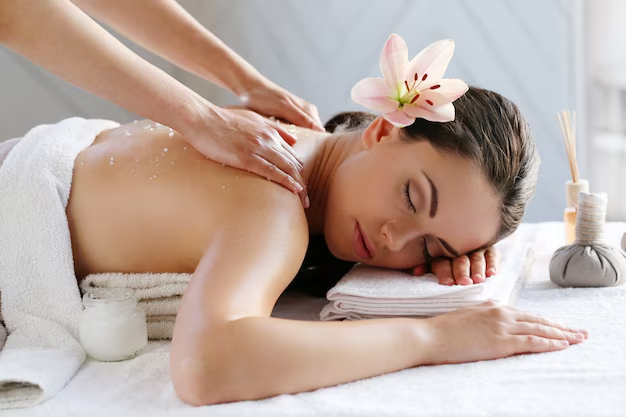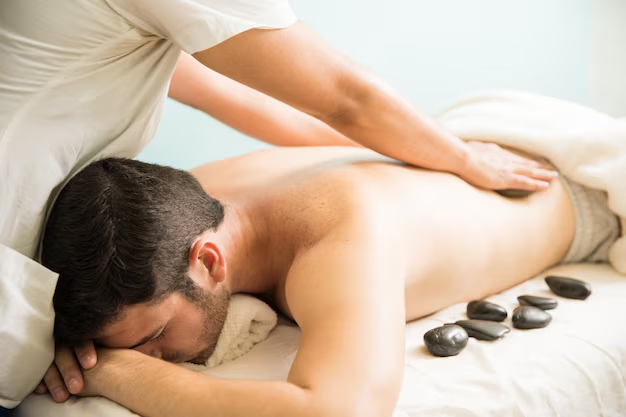
Nourished through deep culturally-based roots around the world, unique methods and philosophies characterize massage therapy from region to region and all the differently realigned fruits that make up the entire collage. From the therapeutic practices of the ancient Chinese Tui Na to the meditative flow of Hawaiian Lomi Lomi, massage therapy bears a rich gamut of approaches toward health and wellness. There is much to learn about understanding cultures as they relate to this healing art, which helps in broadening perspectives with holistic health while deeply grounding universal goals of restoring balance to the mind, body, and spirit.
How is massage therapy practiced in China?
In China, massage therapy, known as Tui Na, focuses on stimulating acupressure points along meridians to promote energy flow. It’s part of traditional Chinese medicine and aims to treat both physical ailments and emotional imbalances.
The Tui Na technique involves a series of rhythmic presses, rubs, and stretches that are applied to the muscles and tissues all over the body. This technique tends to focus on particular points along the meridian lines where the energy or Qi flows. Unlike Western massage, Tui Na often combines with other Chinese medical treatments, including acupuncture and herbal solutions.
The purpose is not merely to relax the muscles but to rebalance the internal environment and support the ability of the body to heal itself. It is typically used for the treatment of diseases and conditions like joint pains, migraine headaches, problems with digestion, and stress. These treatments can be light and relaxing or intense in nature according to individual requirements.
What is the significance of Thai massage?
Thai massage is an ancient practice that combines acupressure, energy line work, and assisted yoga poses. It’s aimed at improving flexibility, and circulation, and balancing the body’s energy through a combination of deep stretches and rhythmic movements.
Thai massage is much more active, and the practitioner manipulates the client’s body into several yoga-like postures along with applying pressure to energy lines known as “Sen.” These energy lines are believed to circulate life force all through the body. Stretching of muscles and focused pressure create relaxation in muscles and improve flexibility and flow of energies.
It’s rooted in Buddhist traditions, and it’s an experience through meditation, facilitating healing within the body as well as the spirit. Thai massage is almost always performed on a floor mat, with no oil at all, unlike most massage techniques practiced in the West.

How is massage therapy integrated into Japanese culture?
Shiatsu, a Japanese massage therapy, focuses on applying finger pressure to specific points on the body. It aims to balance energy flow, relieve tension, and enhance the body’s natural ability to heal itself by targeting meridians.
Shiatsu is based on traditional Chinese medicine but has a distinctly different character from it. “Shiatsu” is derived from the term meaning “finger pressure,” where therapists apply pressure on energy meridians through fingers, thumbs, and palms. Clients do not need any oils or lotions for the treatment, and they keep their clothes fully intact.
Shiatsu aims to reestablish a balanced flow of Qi throughout the body-a concept that aids in stress alleviation, tension management, and improved circulation. It also aims to activate self-healing properties in the body, so it is used as a form of therapy in Japan for conditions such as anxiety, insomnia, digestive disorders, and musculoskeletal pain.
How does Ayurveda influence massage therapy in India?
Ayurvedic massage in India uses herb-infused oils and long strokes to balance the body’s doshas. The massage promotes detoxification, stress relief, and overall wellness, aligning with the holistic principles of Ayurveda for physical and emotional health.
Ayurvedic massage, or Abhyanga, is considered to be one of the most important balancing procedures among all Ayurvedic approaches as it balances doshas Vata, Pitta, and Kapha in the body as per the constitution of an individual. In the medicated herbs applied warm and anointed in this oil massage, deeply penetrating the skin, circulation is improved, nourishment of the body enhanced, and toxins eliminated.
Abhyanga massage is one set of synchronized strokes, usually performed by one or two therapists, which restores the dosha equilibrium. It is a constituent of Panchakarma, a holistic detoxification process. It is not just the treatment from your physical perspective but rather deeply associated with emotional and spiritual well-being to bring harmony between the mind, body, and soul.
What role does Swedish massage play in Western culture?
Swedish massage, popular in Western culture, involves long, smooth strokes and kneading techniques. It’s designed to relax muscles, improve circulation, and promote overall relaxation and well-being, making it a cornerstone of Western spa treatments.
Swedish massage is one of the most widely practiced forms of massage therapy in the West. The foundation is credited to Per Henrik Ling who was a physiologist from Sweden and relies on five major techniques, such as effleurage or long, smooth strokes, petrissage or kneading, friction, tapotement or rhythmic tapping, and vibration. It aims for an enhancement of blood flow to the muscles, relieving tension, and oxygenating the body better.
This massage is quite often used both to reduce stress and to improve overall relaxation but is also very beneficial for physical recovery and in terms of muscular health. Most modern Western spas and wellness centers are using Swedish massage as their primary offering because of the general appeal and effectiveness of such massage techniques.

How is Lomi Lomi massage practiced in Hawaii?
Lomi Lomi is a traditional Hawaiian massage that uses flowing, rhythmic strokes to nurture the mind, body, and spirit. It incorporates breathing techniques and an emphasis on harmony, making it a spiritual and healing experience.
Lomi Lomi, which means “loving hands,” has become more than a physical therapy in Hawaii it’s a spiritual, emotional experience. Practitioners believe the mind and body are intimately connected so the continuous flowing strokes in massage mimic the flow of ocean waves. The pressure is deepened by applying deep pressure with hands, forearms, and elbows and often augments the session with chants or prayers for healing.
Lomi Lomi is about releasing patterns that cause emotional blockages, improving circulation, and harmonizing an individual’s mind, body, and spirit. In Hawaiian, Lomi Lomi means a nurturing practice to elicit deeper relaxation together with emotional well-being.ing.
How does traditional Balinese massage incorporate culture?
Balinese massage blends deep tissue techniques with acupressure and aromatherapy. It reflects Bali’s cultural focus on spiritual and holistic healing, using essential oils and pressure points to restore balance between body, mind, and spirit.
Balinese massage combines methods from a number of cultural traditions: Indian Ayurvedic, Chinese acupressure, and local Indonesian techniques. Deep tissue manipulation, skin rolling, and pressure-point techniques work on relieving muscle tension in addition to improving flow throughout the body. Essential oils, often consisting of herbs and flowers native to Bali, are applied during the massage to afford the full sensory impact and relaxation it is intended to produce.
Balinese massage is of a deep spiritual nature, aiming at equating the body, mind, and spirit of the recipient and linking them to the natural energy of the island. This is therefore widely considered as a remedy for healing since it helps cater to both physical and emotional needs pertaining to the individual, thus bringing about benefits in their spirit.
In Conclusion
Indeed, practices of massage therapy around the world are greatly impacted by local culture, tradition, and philosophies. From Chinese Tui Na to Hawaiian Lomi Lomi, all these forms offer benefits that are said to restore balance to the body, mind, and soul. If people seek relaxation, therapeutic relief, or holistic well-being, understanding these diverse approaches to massage therapy will help them find a method that resonates with their personal health goals. The global perspectives on massage do characterize a universal need for healing and balance.

